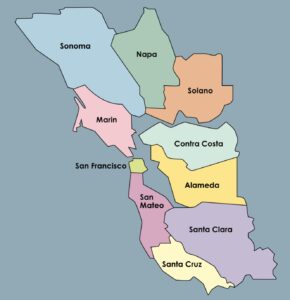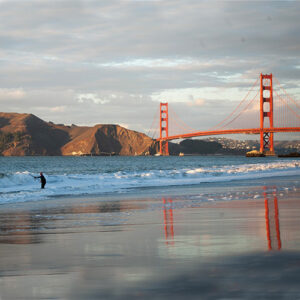New Playbook Details Minutiae of Resilience
In the midst of a climate emergency already thrusting wildfires, drought, and flooding upon us it is easy to feel helpless and lost. The Greenbelt Alliance’s newly released “Resilience Playbook” seeks to combat that resignation by offering a motivating vision and practical steps for building local climate adaptation and resilience. Worried about heat and how it disproportionately affects certain neighborhoods where you live? This resource gives a step-by-step guidance on how to integrate urban greening into general plans, along with a menu of policy examples, budget priorities, and model climate action plans to catalyze resilience action for citizens, municipalities, and community organizations. Critically, the playbook offers advice on effectively partnering with underserved populations and communities who are often left out of the budget and infrastructure conversations where priorities are decided.
Recommendations and “critical actions to take now” come from the Greenbelt Alliance’s six plus decades of land-use policy advocacy and regional collaboration. Executive Director Amanda Brown-Stevens and Director of Climate Resilience Zoe Siegel also bring experience from shepherding the implementation of the 2018 Resilient by Design competition that spurred fantastic visions of South Bay Sponges, Grand Bayways, and Estuary Commons. This playbook focuses on the more mundane minutiae of resilience: city budgets, general plans, and regulations. A decidedly less sexy, and more Sisyphean task — yet also one that is more achievable, and no less important. Whether the intended audience, ranging from local citizens to government planners to political leaders, uses the plays from this book will be up to all of us.
Other Recent Posts
Assistant Editor Job Announcement
Part time freelance job opening with Bay Area climate resilience magazine.
Training 18 New Community Leaders in a Resilience Hot Spot
A June 7 event minted 18 new community leaders now better-equipped to care for Suisun City and Fairfield through pollution, heat, smoke, and high water.
Mayor Pushes Suisun City To Do Better
Mayor Alma Hernandez has devoted herself to preparing her community for a warming world.
The Path to a Just Transition for Benicia’s Refinery Workers
As Valero prepares to shutter its Benicia oil refinery, 400 jobs hang in the balance. Can California ensure a just transition for fossil fuel workers?
Ecologist Finds Art in Restoring Levees
In Sacramento, an artist-ecologist brings California’s native species to life – through art, and through fish-friendly levee restoration.
New Metrics on Hybrid Gray-Green Levees
UC Santa Cruz research project investigates how horizontal “living levees” can cut flood risk.
Community Editor Job Announcement
Part time freelance job opening with Bay Area climate resilience magazine.
Being Bike-Friendly is Gateway to Climate Advocacy
Four Bay Area cyclists push for better city infrastructure.
Can Colgan Creek Do It All? Santa Rosa Reimagines Flood Control
A restoration project blends old-school flood control with modern green infrastructure. Is this how California can manage runoff from future megastorms?
San Francisco Youth Explore Flood Risk on Home Turf
At the Shoreline Leadership Academy, high school students learn about sea level rise through hands-on tours and community projects.










